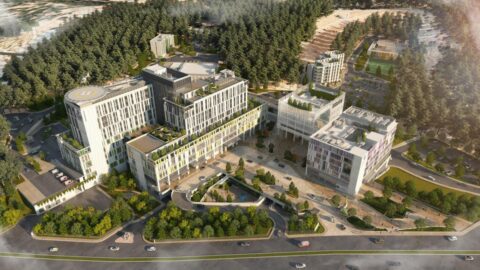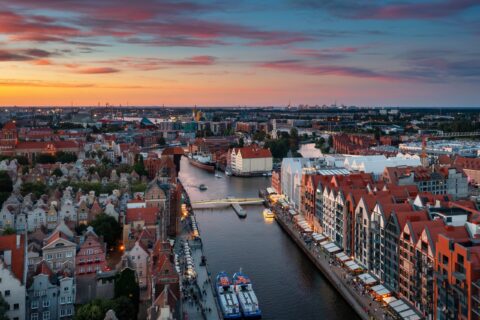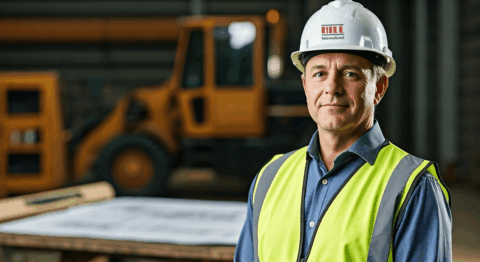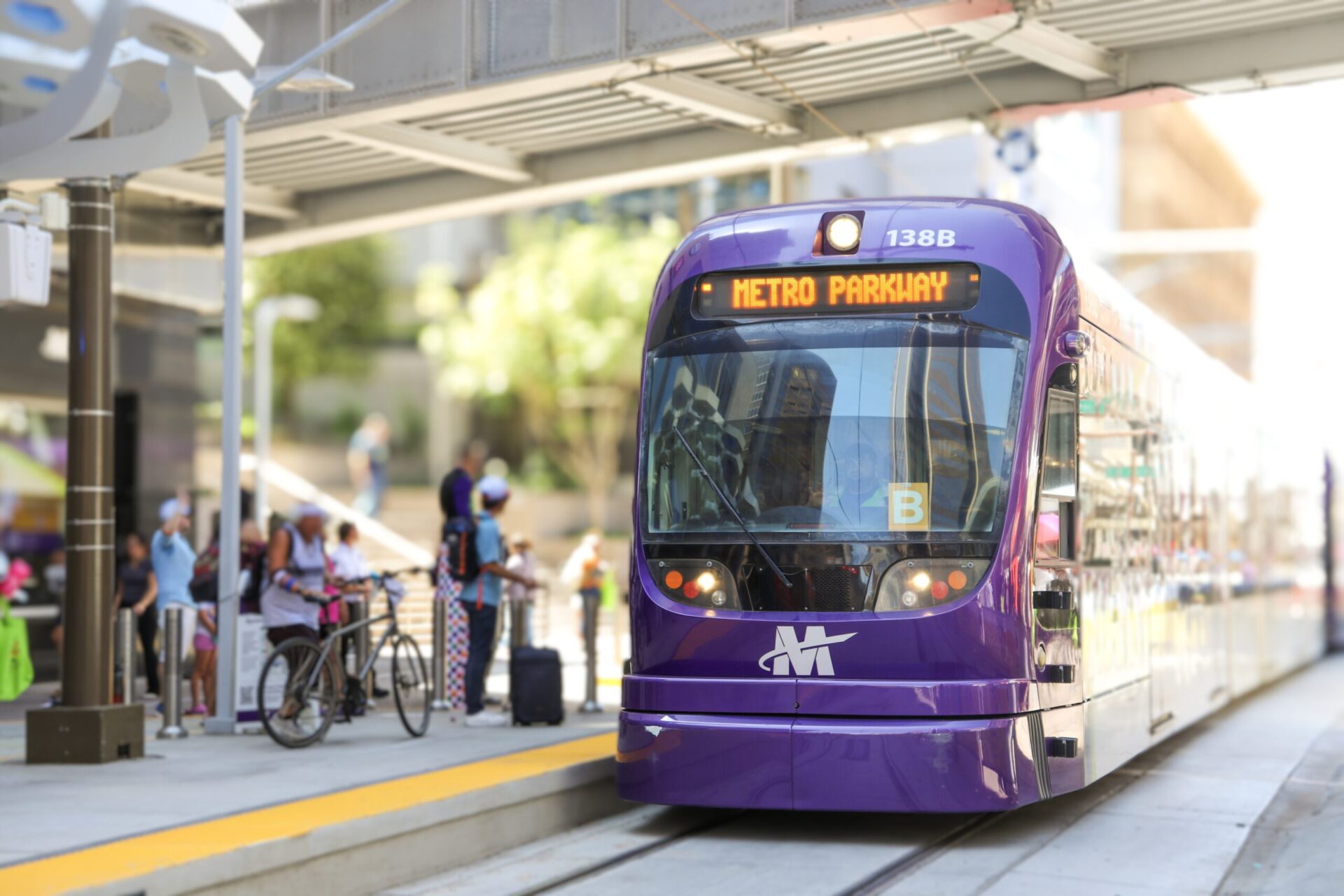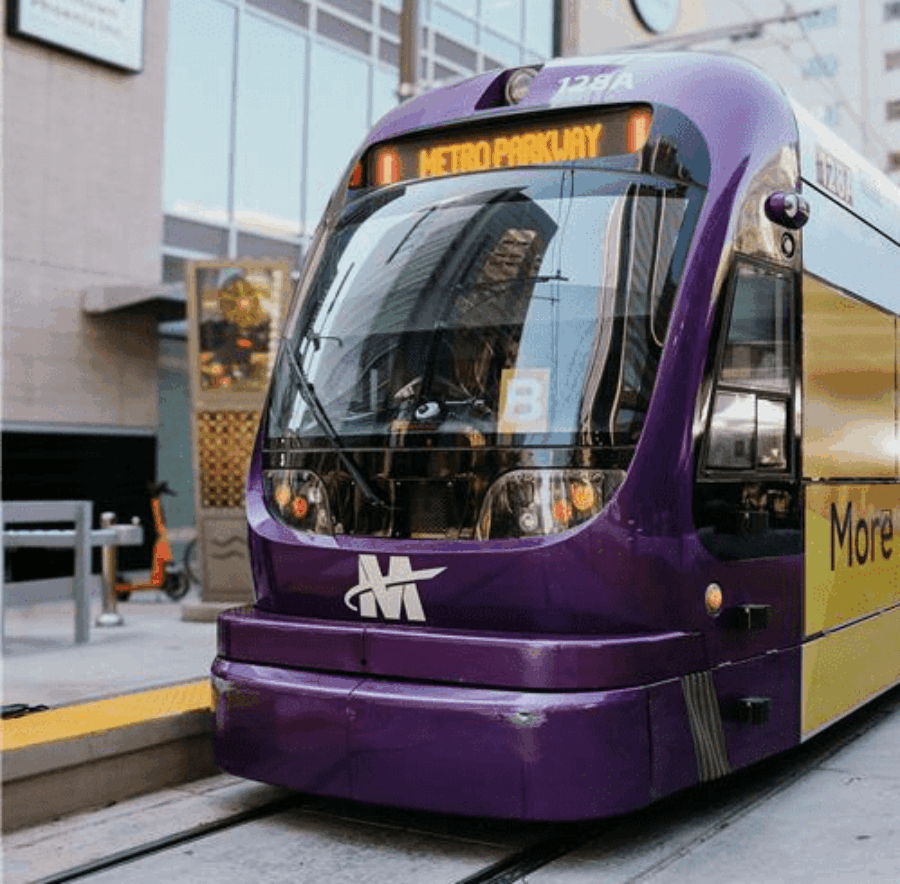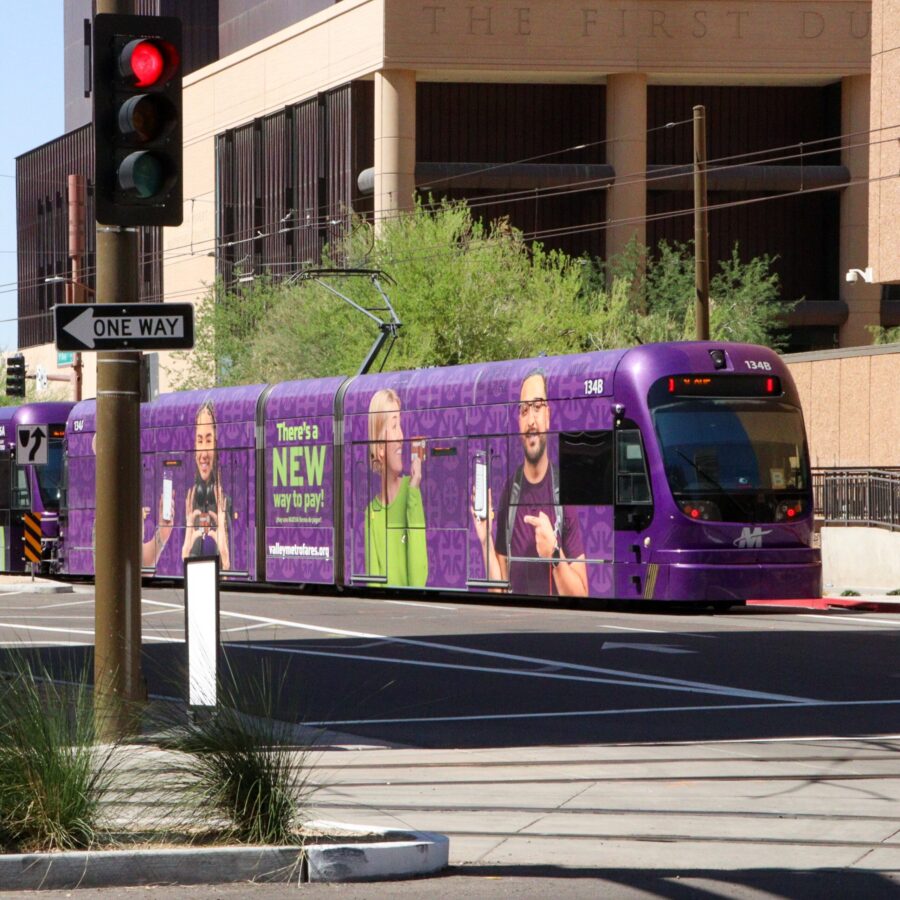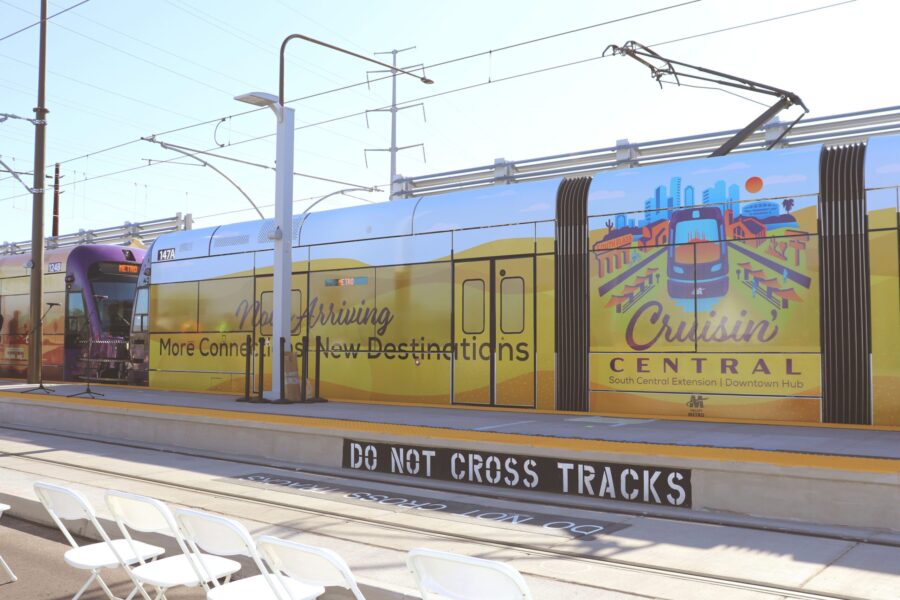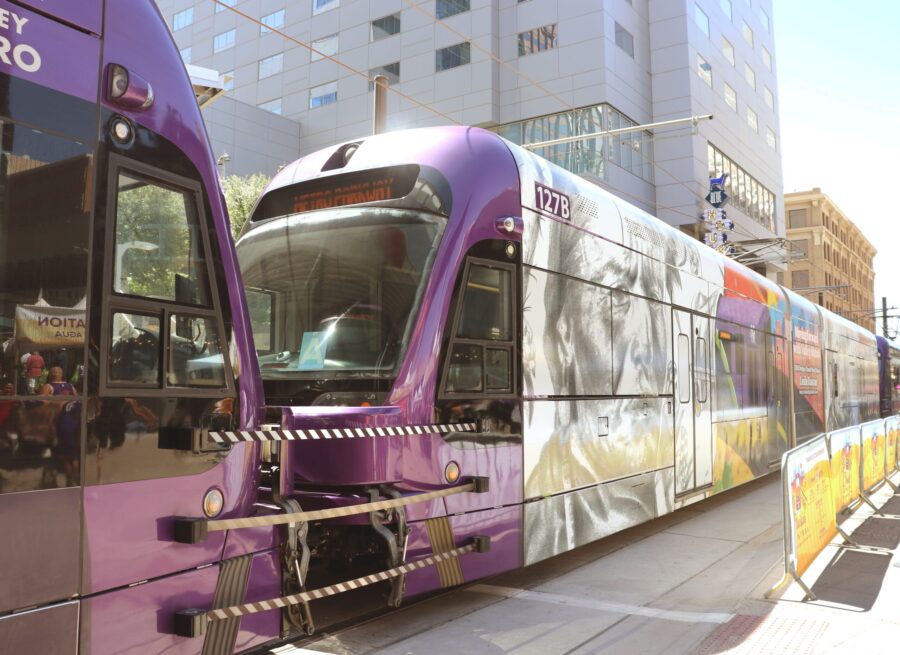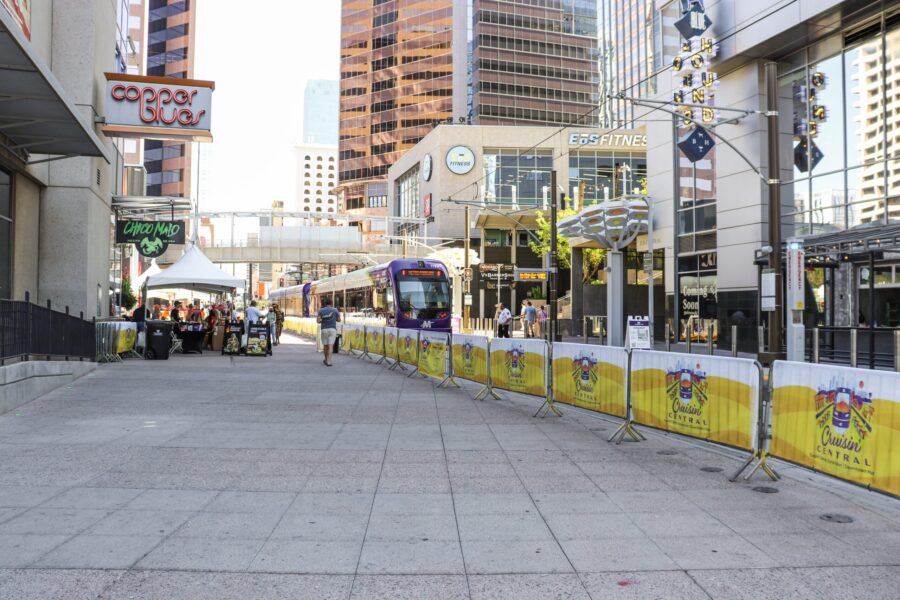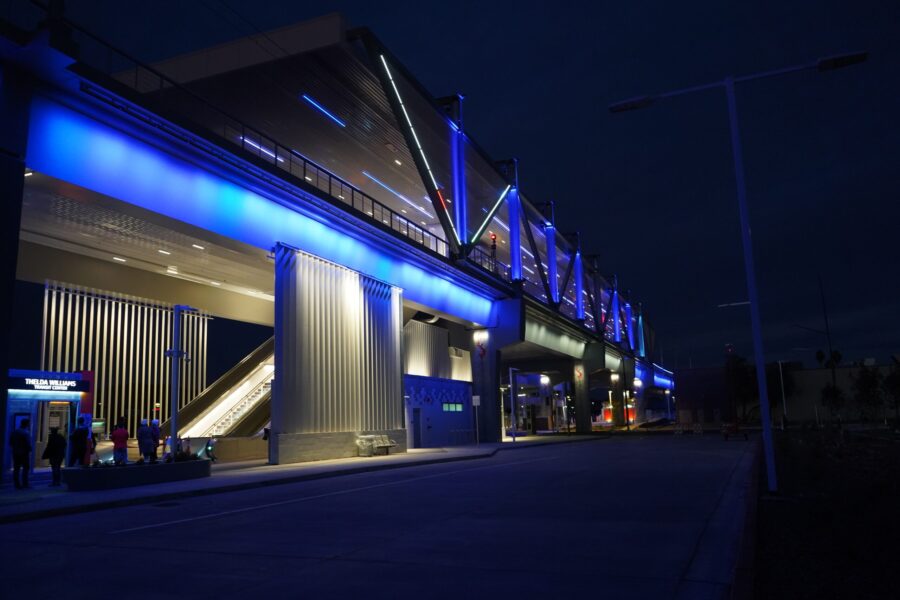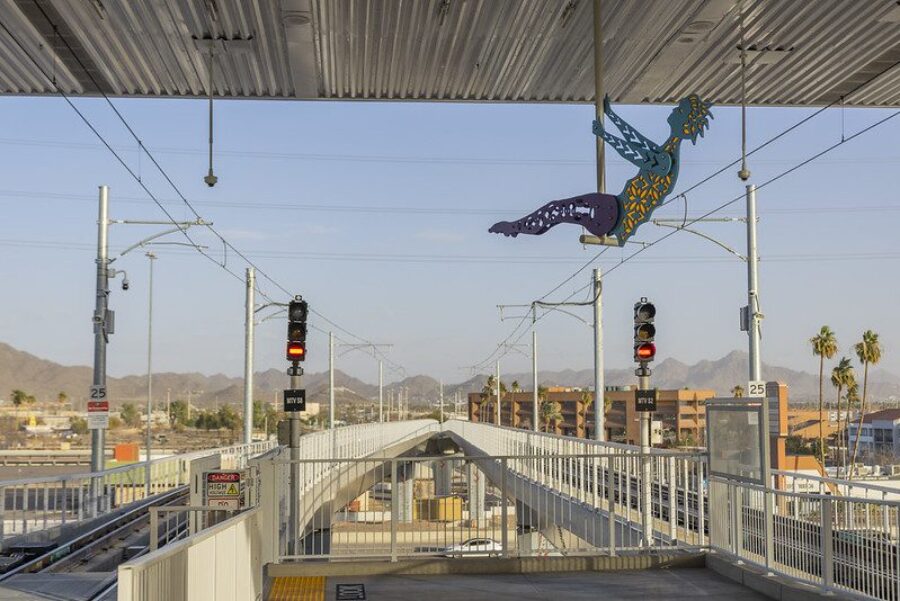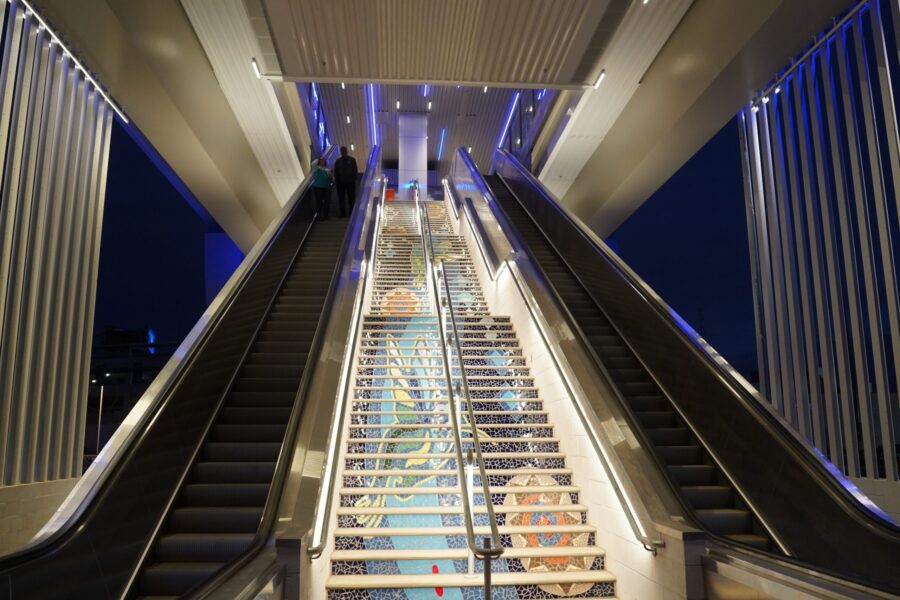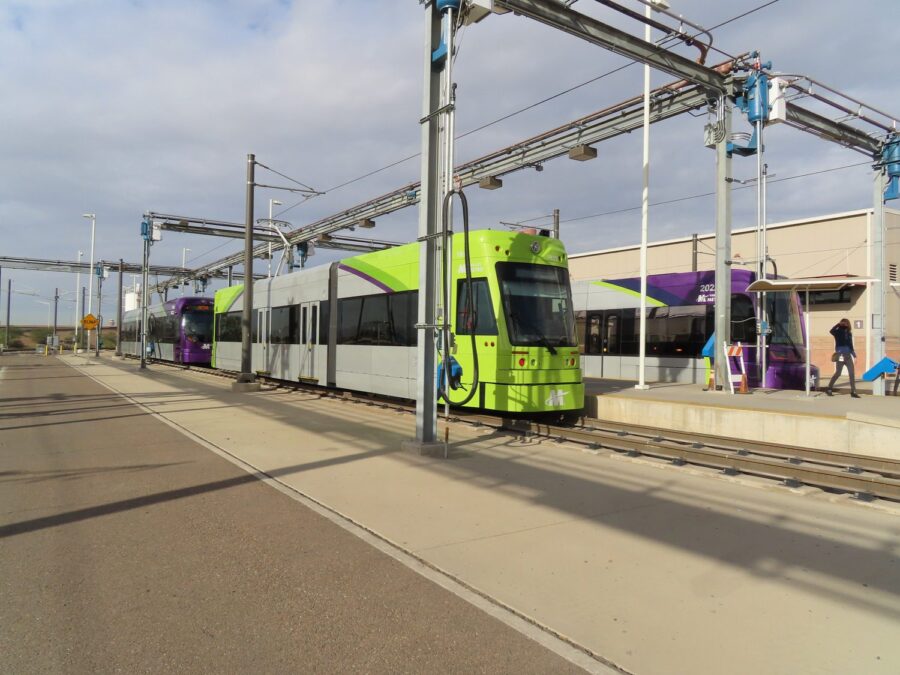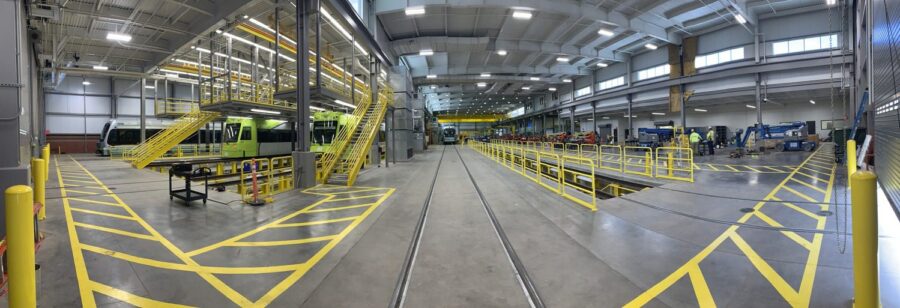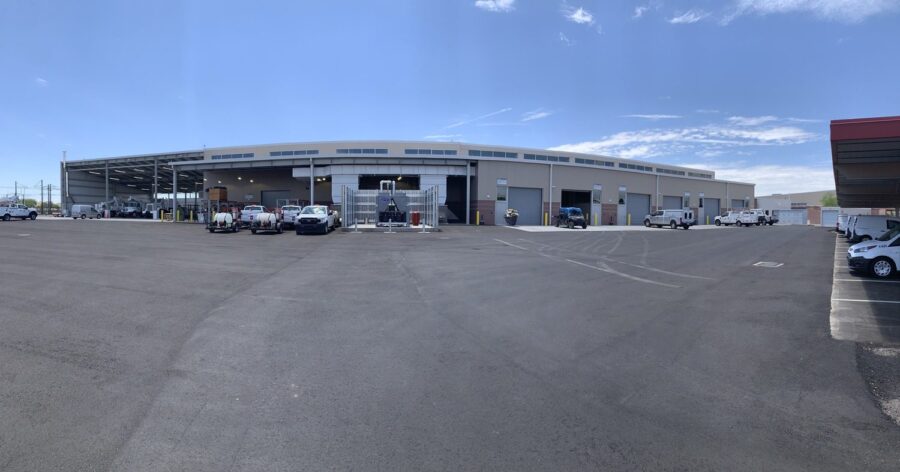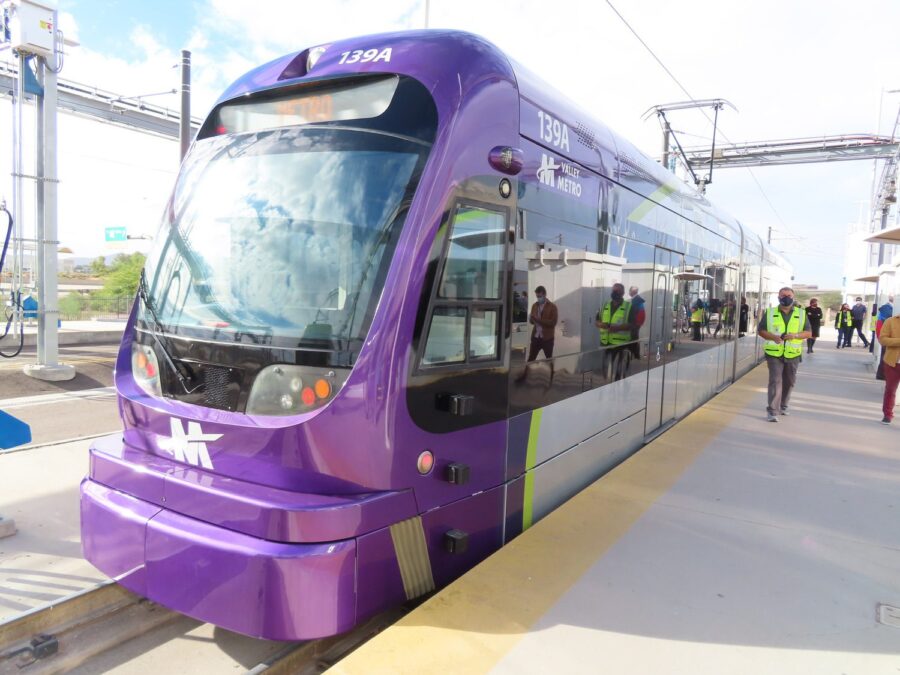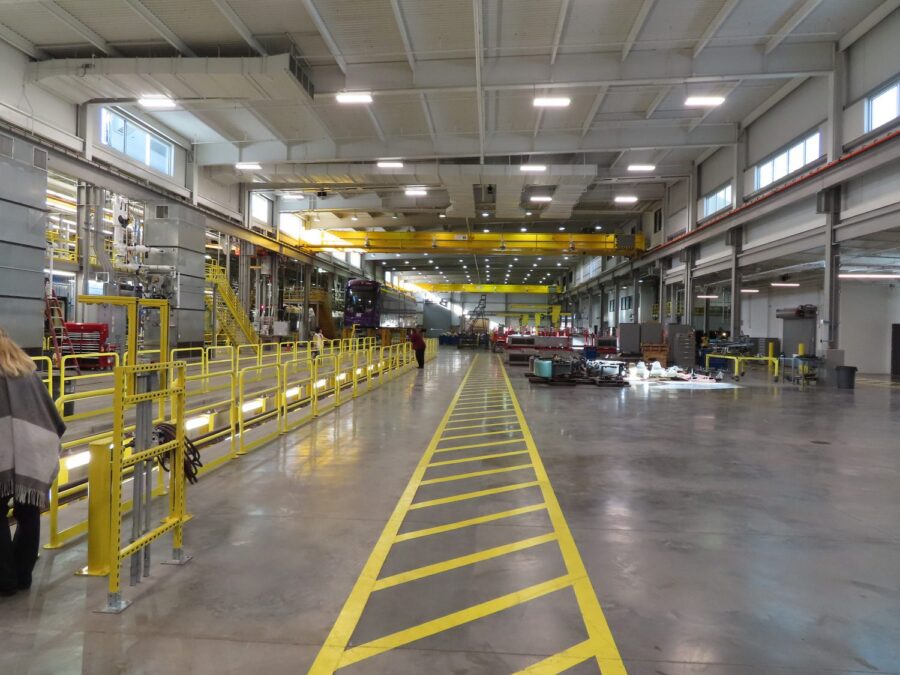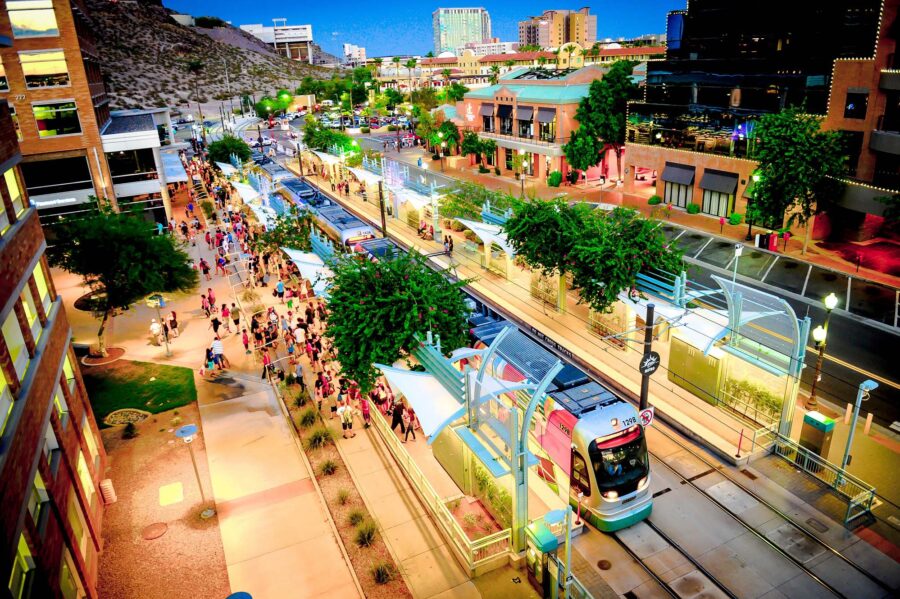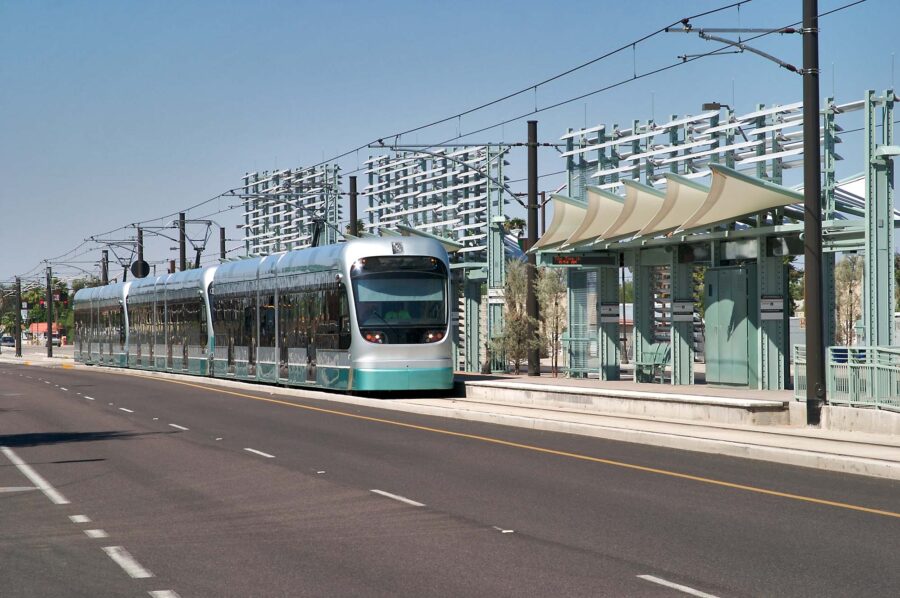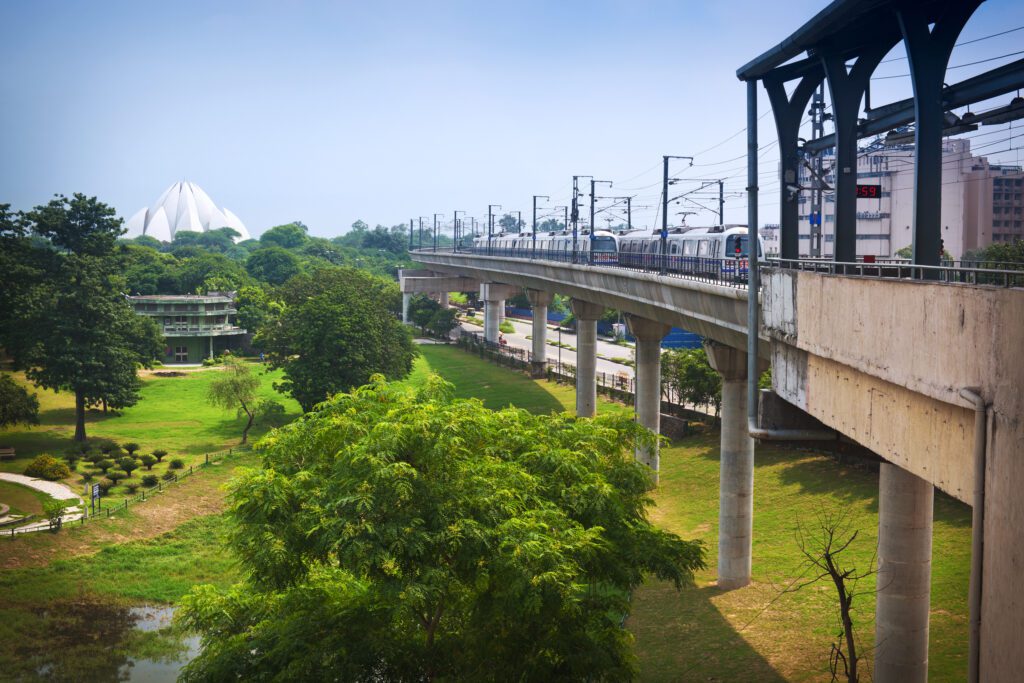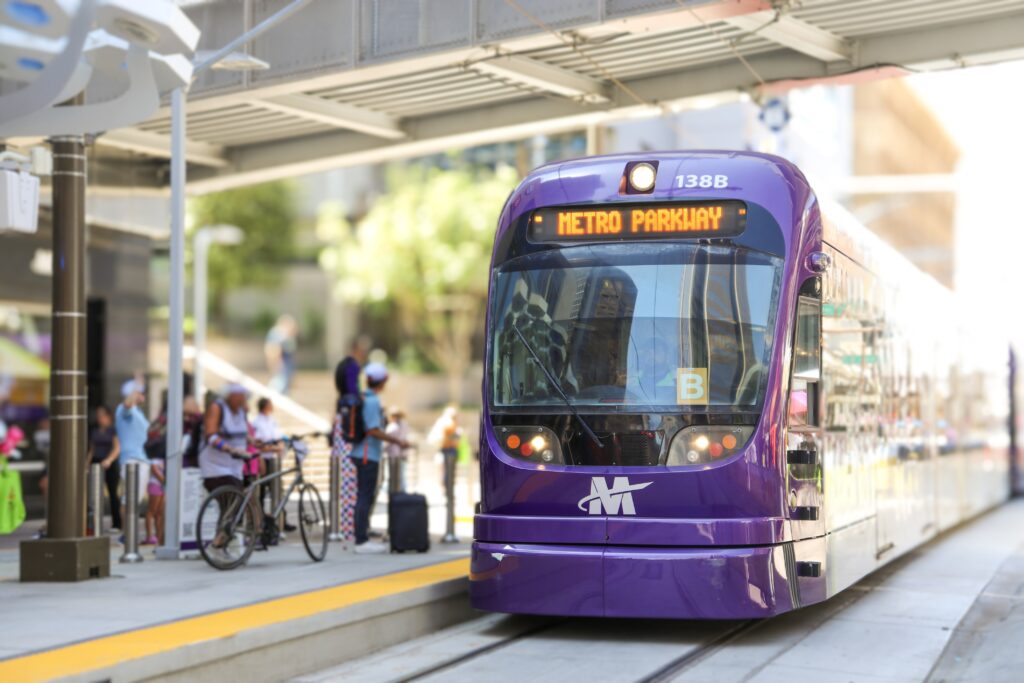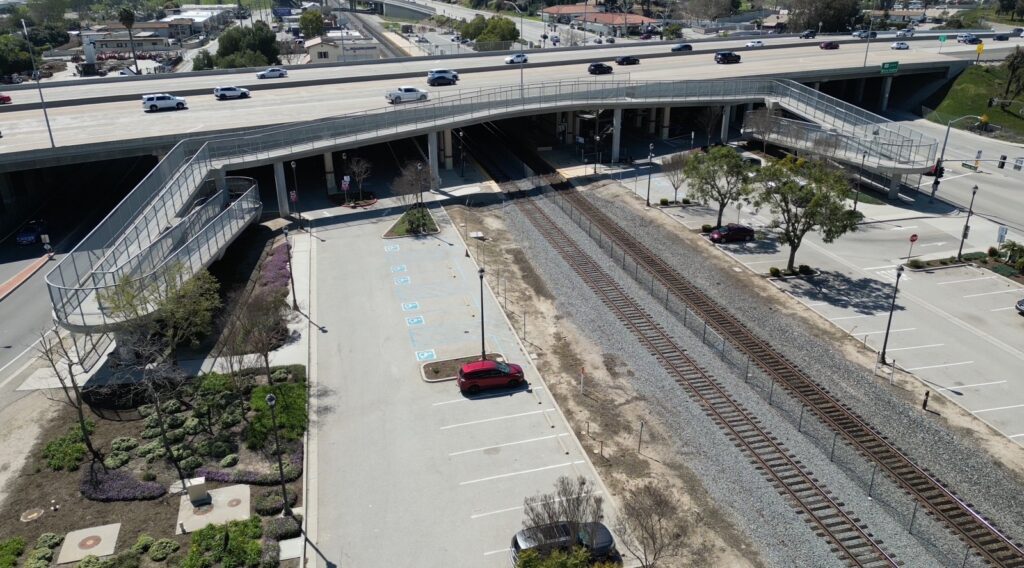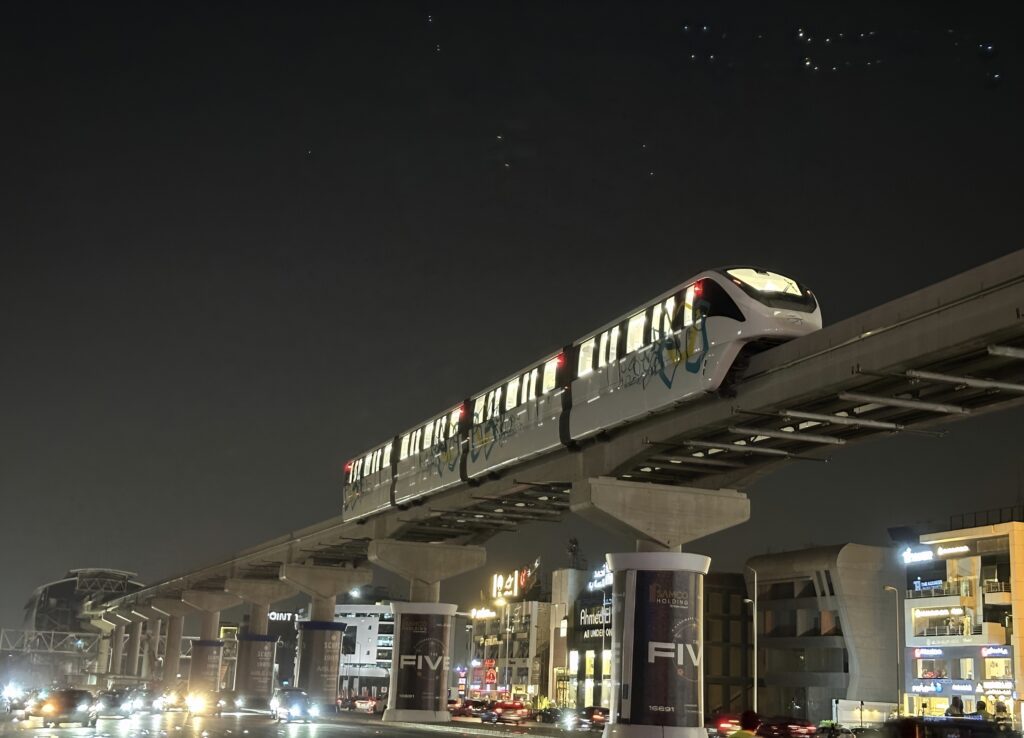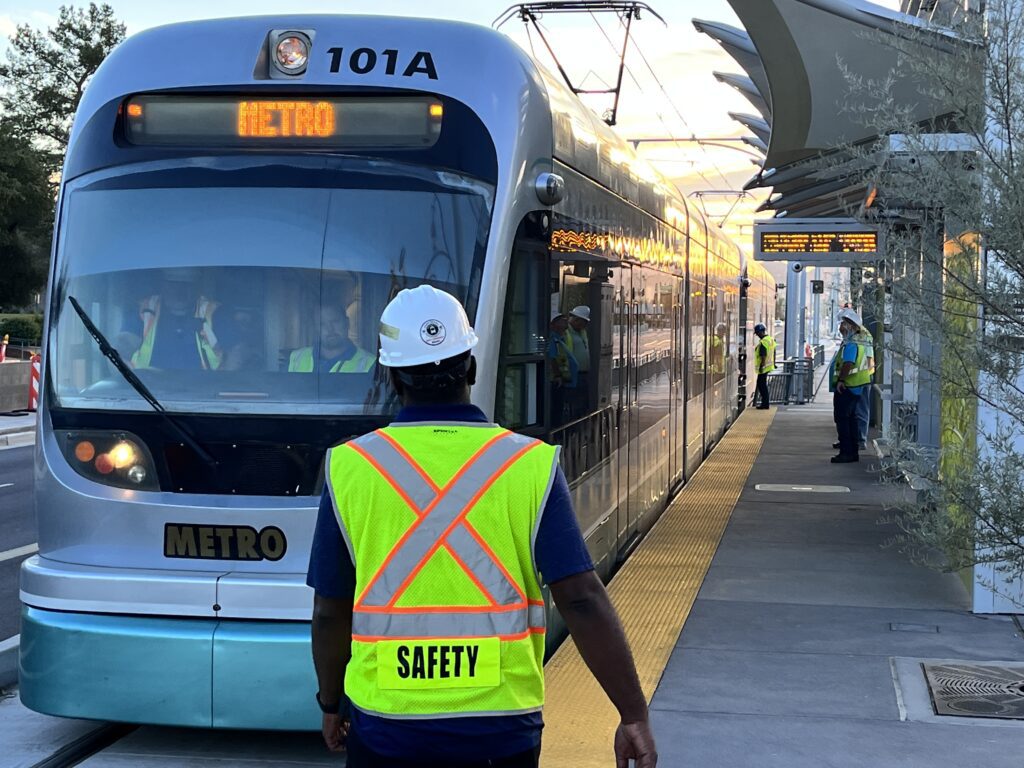Hill is providing program management and construction management services to support Valley Metro’s expansion program. The program will deliver an additional 40 miles of high capacity/light rail corridors and a new streetcar in Tempe. In total, Valley Metro is responsible for delivering more than $6.9 billion in regional transit improvements through 2034.
Specific projects the Hill team has supported include:
South Central Extension/Downtown Hub: This 5.5-mile light rail extension connects Downtown Phoenix with the Southern neighborhoods of the city along Central and 1st Avenues. Featuring 8 stations, a 110-space park-and-ride facility at Baseline Road, more than 550 new trees and desert plantings, 18 art installations, and comprehensive utility upgrades, the project transforms a historically underserved area of the city and connects the community to the educational, economic, and cultural opportunities of Downtown Phoenix. Other details of the project included 22 flared intersections, U.S. Army Corps of Engineers Section 408 permit support for major bridge work over the Salt River, multiple rail roundabouts, and 5 perpendicular light rail crossings. Ultimately, the Extension will also connect with the planned Capitol/I-10 West light rail extension.
Over the course of delivery, the $1.34 billion extension faced numerous challenges the Hill team worked to mitigate. These challenges ranged from the impacts of COVID-19, “unknown unknowns” related to utility work, blackout windows related to Super Bowl LVII, stakeholder concerns along the route, significant change orders, and technical issues such as the installation and integration of the perpendicular light rail crossings with an overhead catenary system.
The Hill team worked with Valley Metro, the contractor, and local stakeholders and utilities to address these challenges. Our solutions included leveraging Hill relationships with utilities directly to expedite work, reaching out on behalf of stakeholders to third parties to make sure concerns were heard and documented, and supporting Valley Metro with actionable data and estimates during change order negotiations. These steps helped the project progress and eased schedule and cost impacts. Hill also prepared a detailed lessons learned and best practices library for Valley Metro near the conclusion of the project, positioning work on future LRT extensions for more efficient delivery.
ENR Southwest has honored the project with Awards of Merit in both the Airport/Transit Category and for Excellence in Safety.
Capitol Extension (CAPEX): This 1.8-mile light rail extension is currently in design, and a Construction Manager at-Risk (CMAR) contractor is on board. This new corridor of Valley Metro’s light rail system will run west from Downtown Phoenix along Washington Avenue towards the State Capital area, turn south along 15th Avenue, and return along Jefferson Avenue to the east and reconnect with the Downtown area. This project will include multiple additional stations along its route, with construction anticipated to begin in 2025.
The Hill team facilitated a value engineering/risk analysis workshop to support design. Additional Hill services include scheduling/estimating; public art coordination, including request for qualifications/request for proposals development, artist interviews/selection, coordination with the designer, and managing public art open houses; and coordination with utilities and other stakeholders.
I-10 West Light Rail Transit Project: This planned light rail extension comprises a 10-mile I-10 West Extension. The new corridor will connect with the CAPEX project currently under design, run north to the I-10 West Corridor, then travel west and end on 79th Avenue at the existing Desert Sky Transit Center. The alignment is part of the Phoenix West Locally Preferred Alternative (LPA). Uniquely, a portion of the I-10 West Extension will run along the median of the I-10 freeway. The scope is expected to include eight stations, three new park-and-ride facilities, and a crossing of the South Mountain Freeway. This project is currently in the early project development phase. with a planned commencement of construction in 2030. This and the CAPEX project will connect the greater West Valley to the existing Valley Metro light rail system.
West Phoenix/Central Glendale Light Rail Transit Project: This project entailed a study to evaluate the potential for a future light rail transit extension running northwest into downtown Glendale. Hill helped Valley Metro, in cooperation with the cities of Phoenix and Glendale and the Maricopa Association of Governments (MAG), plan and conduct the study, which recommends a new five-mile light rail transit corridor from the intersection of 19th Avenue and Camelback west on Camelback Road, north on 43rd Avenue, west on Glendale Avenue, and west on Glenn Drive. The recommended corridor includes seven potential stations. Planning for this project continues.
Northwest Phase II Light Rail Transit Extension: This is a 1.6-mile light rail extension running west along Dunlap Avenue and then north and west across I-17 to the former Metrocenter Mall area. In 2016, the Phoenix City Council approved a measure to accelerate components of the future high-capacity transit system envisioned in the city’s voter-approved Transportation 2050 initiative. As a result, Valley Metro commenced design for the Northwest Extension Phase II project in the summer of 2018. The project concluded on January 27, 2024—one year ahead of its anticipated 2025 opening. The project required close coordination with the Arizona Department of Transportation and features Valley Metro’s first aerial station facility at the terminus. Work also included a new Transit Center, two new stations in addition to the aerial terminus station, an elevated guideway, and an integrated, four-story parking garage. A major challenge for this project was the grade separation with I-17 aerial flyover leading into the terminus station. The delivery method was CMAR and construction value was $281 million.
50th Street Station Projects: Completed in 2020, this $30 million project is located just west of the bridge into Tempe. The station is currently the last light rail station within the City of Phoenix before entering Tempe. Work involved the relocation of major utility systems within the right-of-way, including a high-pressure gas line. The station was built with extra attention to Americans with Disabilities Act (ADA) compliance and integration with a major physical rehabilitation center adjacent to the station.
Tempe Streetcar Projects: The Tempe Streetcar project provides a commuting solution for the City of Tempe by connecting a residential area at Apache Boulevard, across from the Arizona State University campus in Downtown Tempe, with Rio Salado Parkway at a busy commercial/business center terminus. The Streetcar also enables intermodal connection with Valley Metro’s light rail system at Mill Avenue and Apache Boulevard.
This construction manager-at-risk (CMAR) project installed a total of 6.3 miles of rail, with 3.8 miles of single and double track segments, 7 single turnouts, and 2 crossovers. As streetcar track is shared with local traffic, the project also necessitated 19 grade crossings in downtown Tempe. In addition, the streetcar stops at 14 new stations, each featuring artwork installations by local artists. An overhead catenary system (OCS) provides power for the streetcar, delivered by three traction power substations. These substations are adorned with high-finish architectural wall panels to complement the local urban streetscape.
Notably, the City of Tempe required the project team to eliminate the OCS for streetcar operations in Downtown Tempe. The team accomplished this by providing primary power to the streetcars via a dedicated battery power supply, allowing the vehicles to travel from Mill Avenue to Tempe Beach Park without any overhead wires. This unique design feature preserves Downtown Tempe’s uncluttered character.
To help realize the project as planned, the Hill team worked in close collaboration with the City of Tempe government and the contractor to solve problems in the field, keep the project on budget, and meet schedule requirements. A highlight of the team’s work was change management support, as $14 million in contract change orders were made over the 3 year construction phase of the project. These modifications included Issued for Bid-to-Issue for Construction adjustments, roundabout construction, and the Dorsey power switches—which were designed during construction to upgrade Valley Metro’s light rail system.
Hill also managed hundreds of conflicts between the OCS and underground and overhead utilities. Similarly, we helped identify and resolve conflicts between the streetcar track slab, the existing road geometry, and the local drainage system. The team’s solution encompassed additional grading and paved areas beyond the original design. Additional power connections between local providers and service entry systems were made during construction as well. In each case, the team discussed design and construction methods, with Hill providing independent cost estimates to provide clarity and increase cost certainly.
Another key area where Hill directly contributed to project success was through design evaluation support. Reviewing designs during construction, we identified modifications such as simplified traffic signals and streetlight connections, unnecessary catch basins, duct bank changes, and even contract allowance adjustments. Our work resulted in a $4 million credit to the project. The team also contributed to Integration Test Coordination for the project, as well as Safety & Security Certification.
Operations and Maintenance Center Expansion: The $93 million, design-build Operations and Maintenance Center Expansion Project (OMCEXP) delivered yard and shop facilities to accommodate 40 new vehicles along with all associated maintenance and service space requirements, including critical infrastructure upgrades. Now completed, the expansion enables Valley Metro to maintain a fleet of approximately 90 vehicles, compared to the former capacity of 50 vehicles. Hill provided project management and resident engineering support for the OMCEXP.
The project added 35,500 SF of Maintenance and Operations (MOE) space and 25,000 SF of working area to the Maintenance of Way (MOW) buildings. Using a mechanically stabilized earth (MSE) wall and engineered fill, the project team also raised the yard to add 3 new 1,500 LF storage tracks. The facility also features 5 additional service bays in the MOE, 18,000 feet of new trackwork, and 16 new turnouts and 3 adjusted switches to maximize geometry in the yard.
The project also revamped the cooling systems in the MOW and MOE buildings, especially in the shop spaces for the benefit of light rail vehicle (LRV) mechanics. The MOE now cools 174,000 SF of shop space to 75 degrees Fahrenheit year-round with an air rotation unit (ARU) cooling tower system. The project also added an additional substation to the yard, replaced train wash equipment, improved system safety by installing a new sanding system for the LRVs, and added two new cleaning platforms. Notably, these systems needed to allow for two new dynamic vehicle envelopes to accommodate the Siemens LRVs and the Brookville streetcars, as well as the current Kinkisharyo LRVs, for clearance and safety in the shop and yard.
The project’s upgrade and repair elements included correcting the tension of the overhead catenary system (OCS) in the yard, replacing failing components, and bringing the overall facility to a state of good repair. Notably, Valley Metro delivered the project while maintaining operations and without disrupting mainline revenue service.
 menu
menu
 menu
menu
